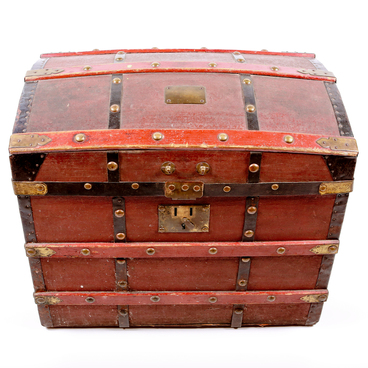The opera glasses (also known as theater binoculars) from the collection of the Kasimov Museum-Reserve belonged to the wife of a local merchant Akhmed Kastrov. The light and compact body was made of brass and attached to an extended handle.
The first opera glasses began to be used at the early 17th century. They were expensive, bulky and uncomfortable. A new, more compact, model was offered by the Austrian optician and inventor Christoph Voigtländer. In 1756, he founded a family business in Vienna, where lens and lenses for cameras, including opera glasses, were produced.
The first opera glasses were launched by Voigtländer in 1823. Earlier, such devices were made only at the request of high-ranking people. The new binoculars quickly became popular among theater devotees: it helped see a performance on stage even when sitting in the farthest rows.
However, those ones launched by Voigtländer had a drawback: the picture was blurry due to low-quality lenses. That drawback was corrected by the German optician Ernst Abbe in 1870. He developed and started to produce achromatic lens and binocular prisms that prevented dispersion.
Such binoculars could successfully magnify the picture on stage and cover a wide area. At the same time, the viewer could pull the focus of the picture depending on the distance of the scene. At that time, opera glasses were considered to be the most accurate and modern optical devices, even compared to monocles.
Opera glasses not only helped to see the performance in detail but were also used as an exquisite accessory. Their bodies were covered with high-grade silver and gold; they had inserts made of mother of pearl, mahogany, and ivory.
In the 19th century, opera glasses came into fashion in Russia. The most famous optical equipment stores were located in St. Petersburg. Their owners were Ivan Urlaub, Johann Milk, and others.
During the time, compact binoculars began to be used in other places: in circuses, at concerts, and sports matches.
The first opera glasses began to be used at the early 17th century. They were expensive, bulky and uncomfortable. A new, more compact, model was offered by the Austrian optician and inventor Christoph Voigtländer. In 1756, he founded a family business in Vienna, where lens and lenses for cameras, including opera glasses, were produced.
The first opera glasses were launched by Voigtländer in 1823. Earlier, such devices were made only at the request of high-ranking people. The new binoculars quickly became popular among theater devotees: it helped see a performance on stage even when sitting in the farthest rows.
However, those ones launched by Voigtländer had a drawback: the picture was blurry due to low-quality lenses. That drawback was corrected by the German optician Ernst Abbe in 1870. He developed and started to produce achromatic lens and binocular prisms that prevented dispersion.
Such binoculars could successfully magnify the picture on stage and cover a wide area. At the same time, the viewer could pull the focus of the picture depending on the distance of the scene. At that time, opera glasses were considered to be the most accurate and modern optical devices, even compared to monocles.
Opera glasses not only helped to see the performance in detail but were also used as an exquisite accessory. Their bodies were covered with high-grade silver and gold; they had inserts made of mother of pearl, mahogany, and ivory.
In the 19th century, opera glasses came into fashion in Russia. The most famous optical equipment stores were located in St. Petersburg. Their owners were Ivan Urlaub, Johann Milk, and others.
During the time, compact binoculars began to be used in other places: in circuses, at concerts, and sports matches.

